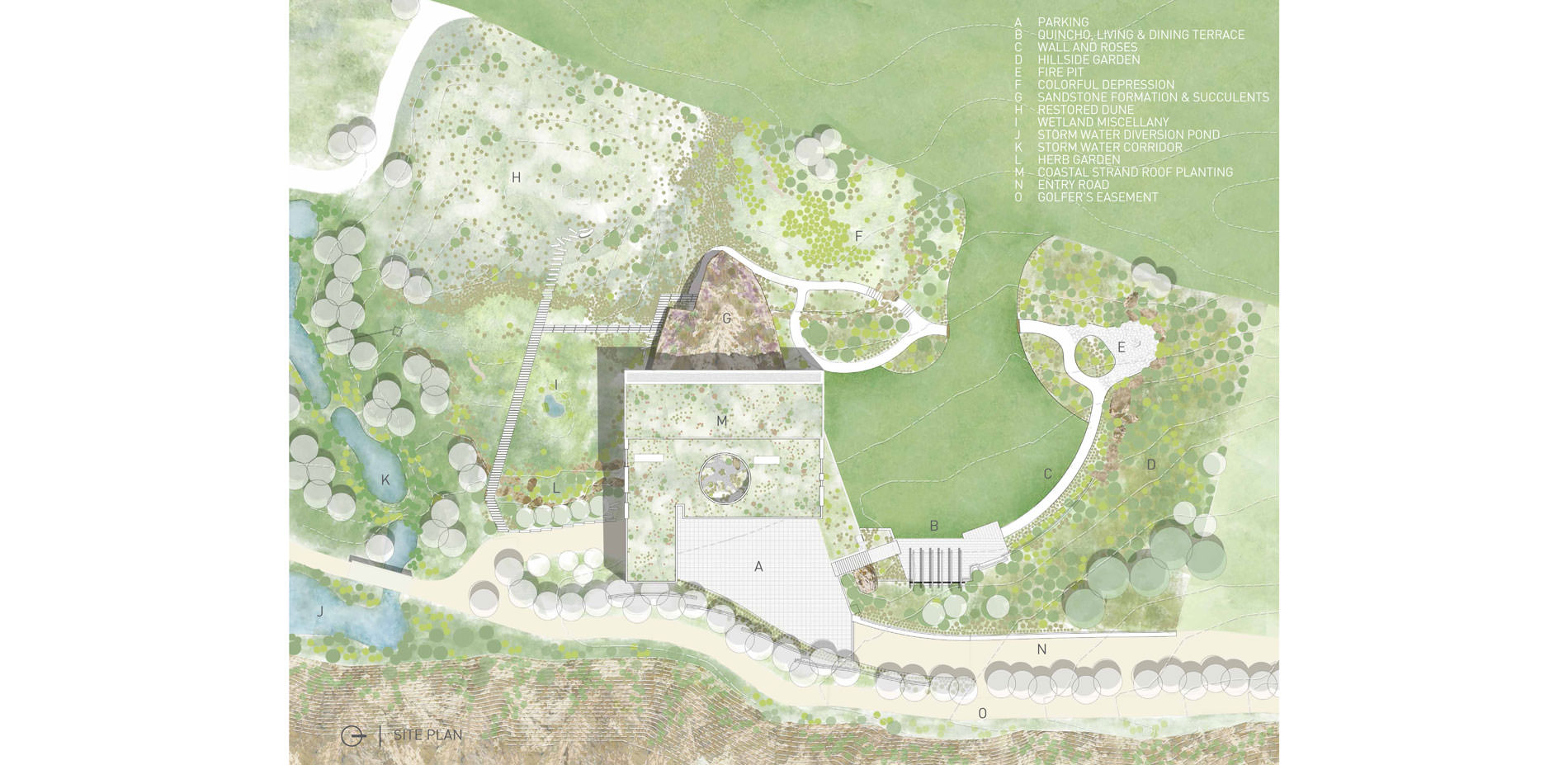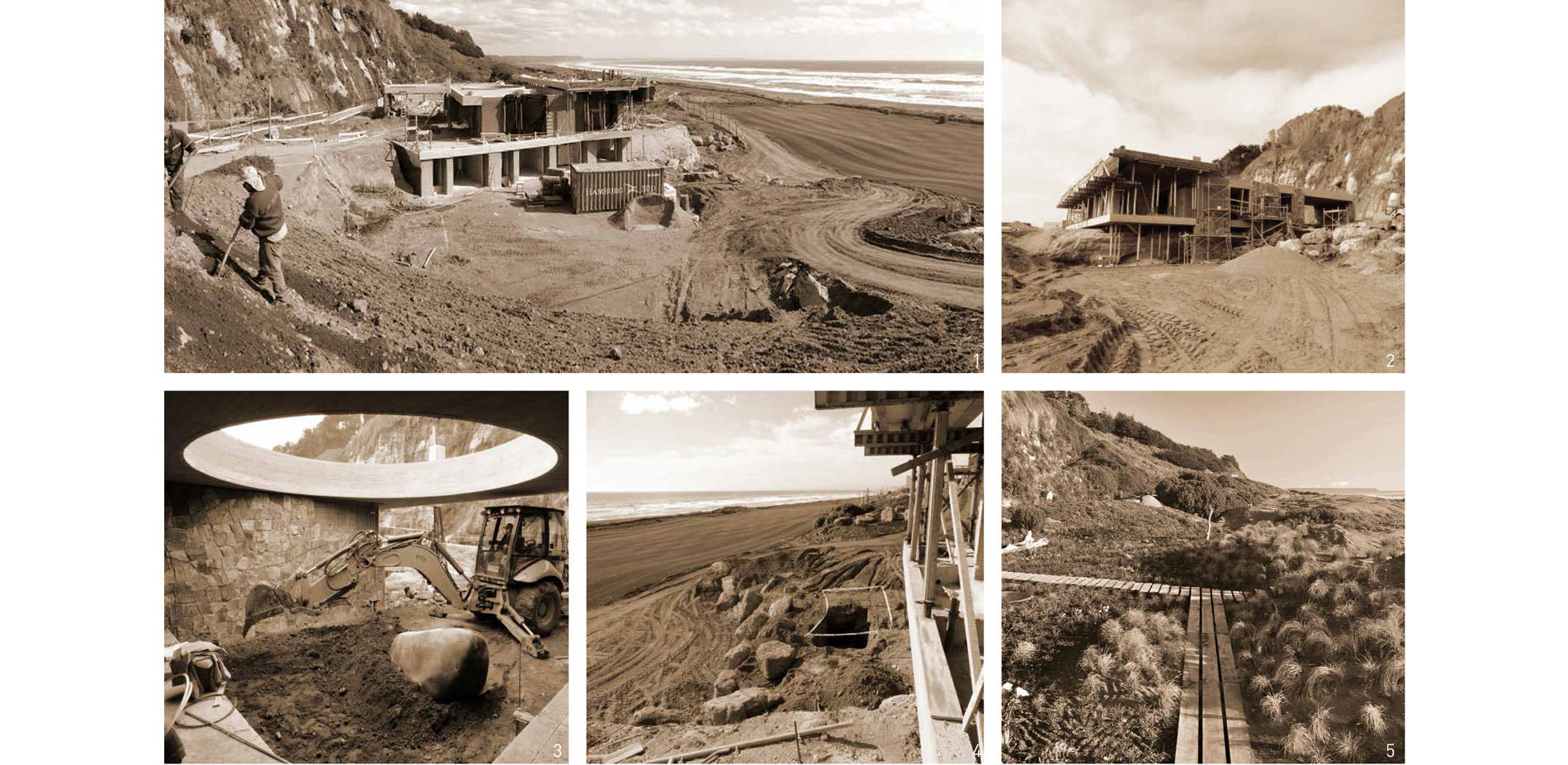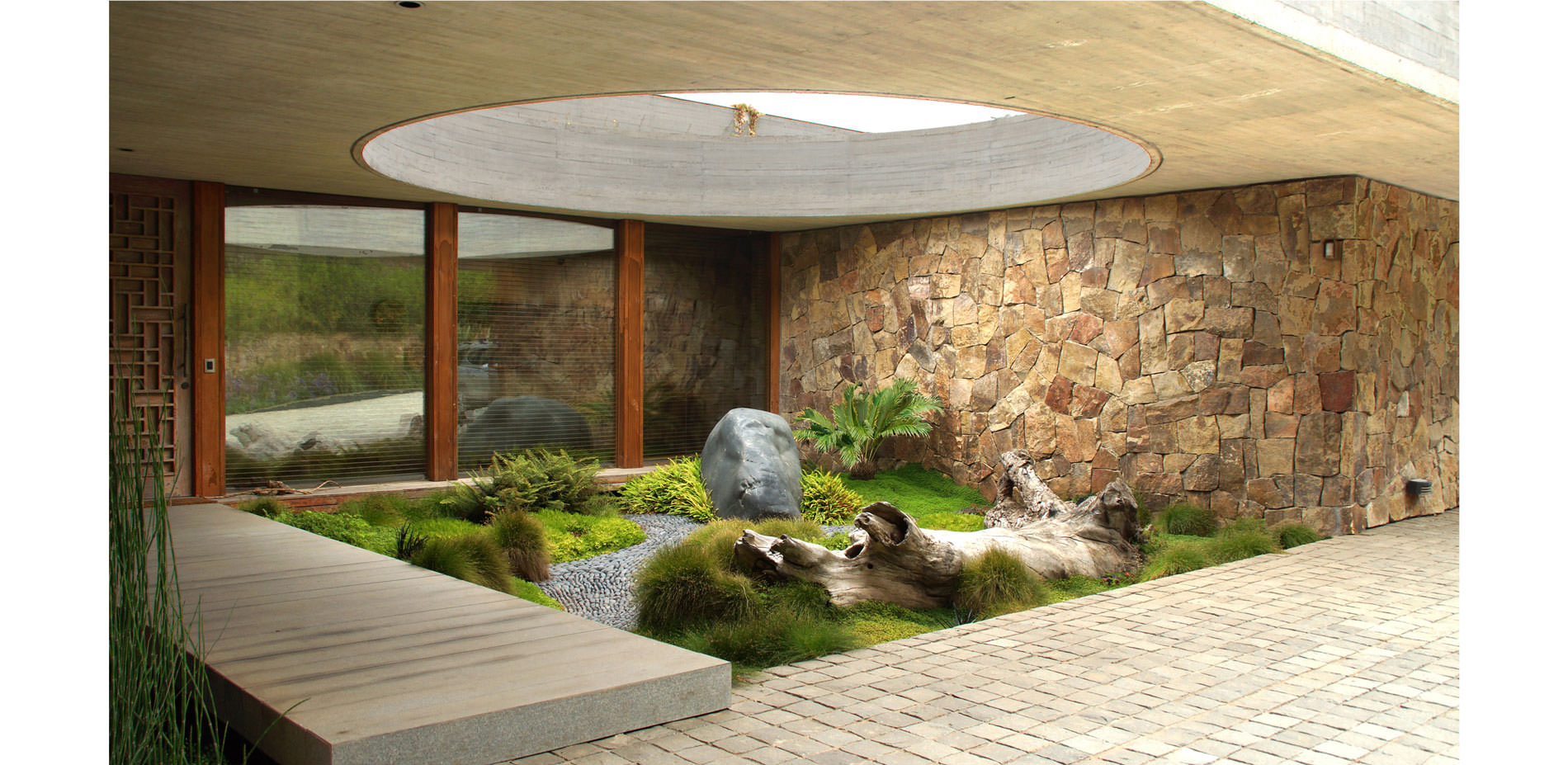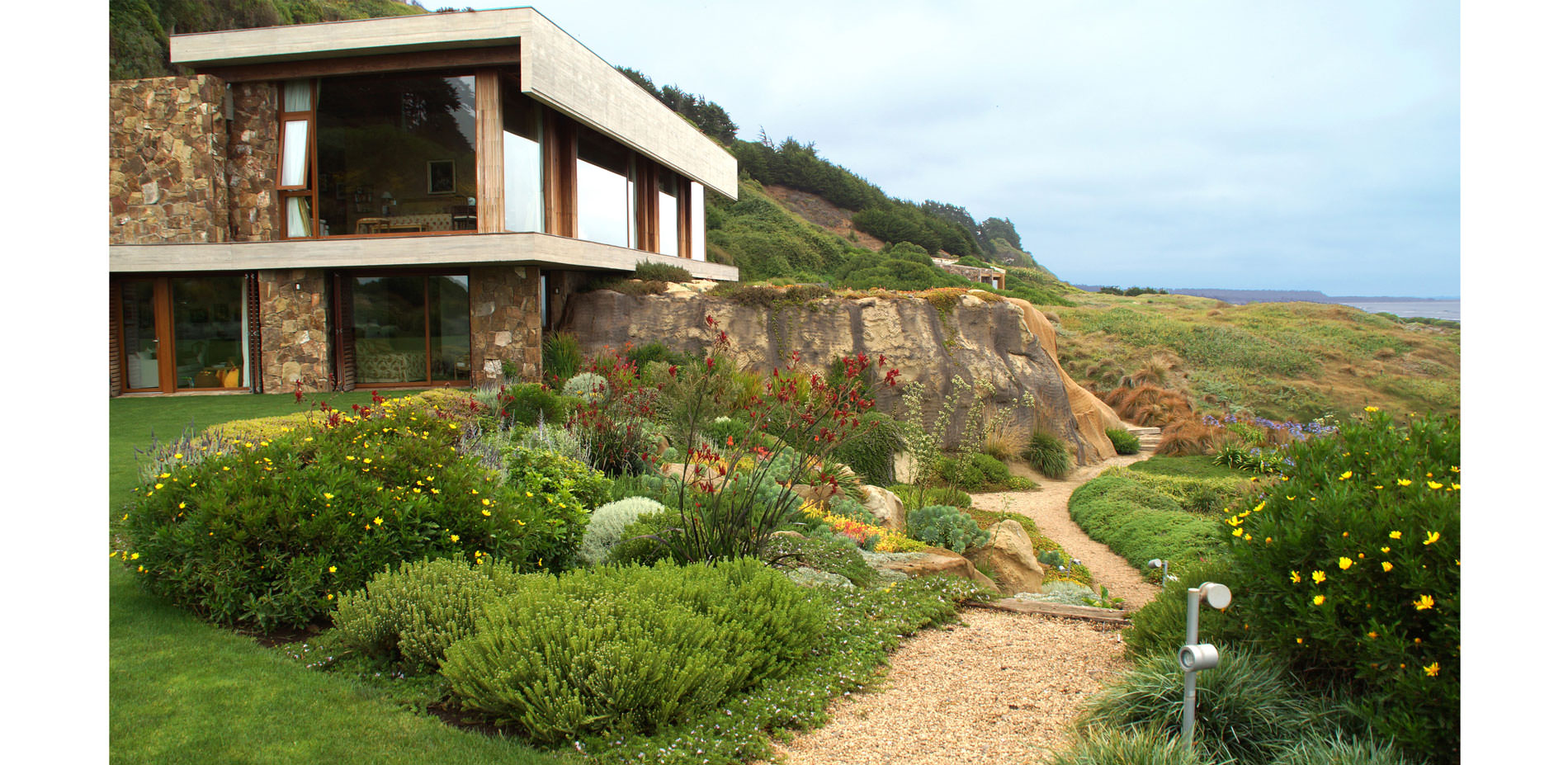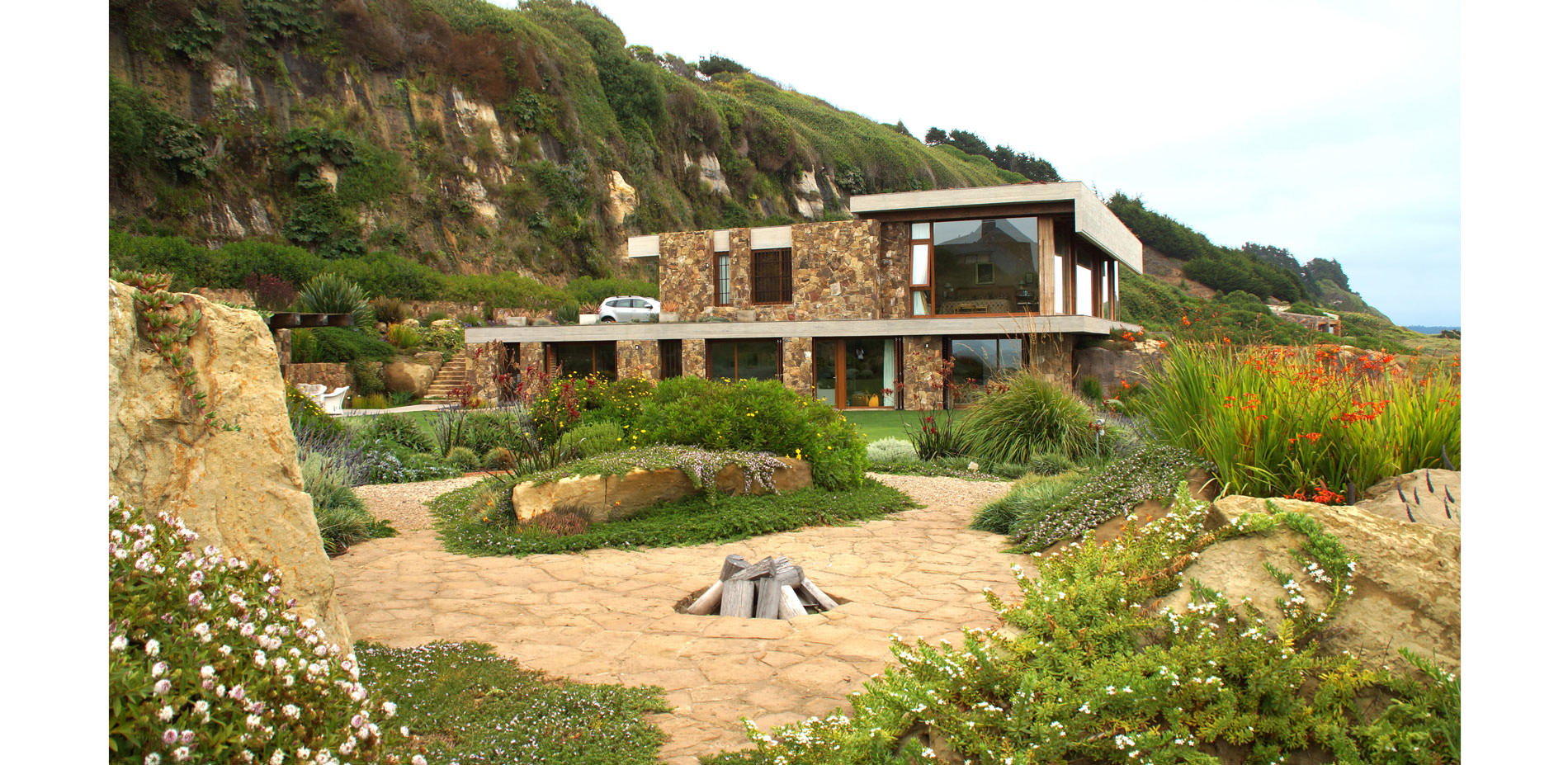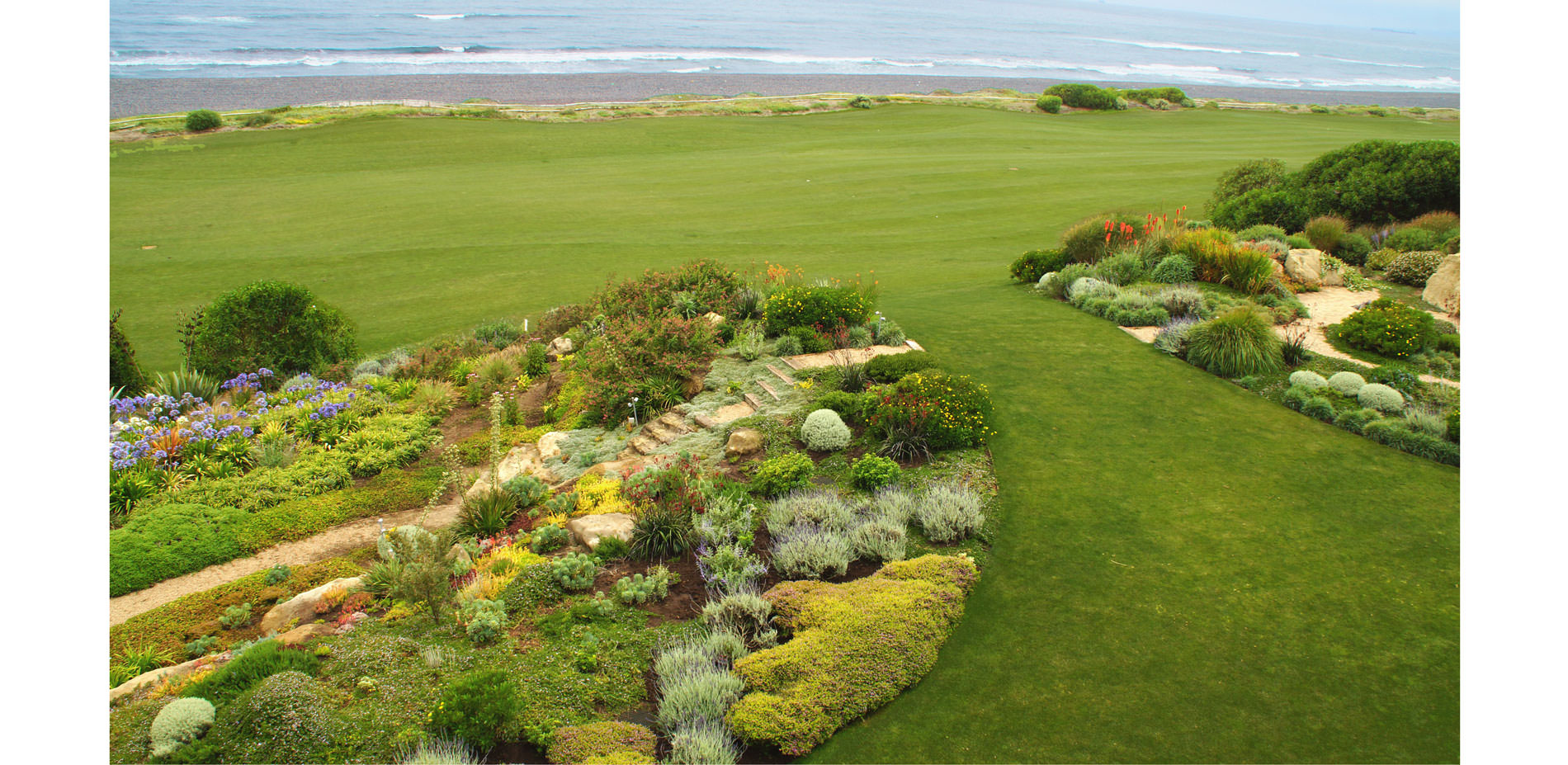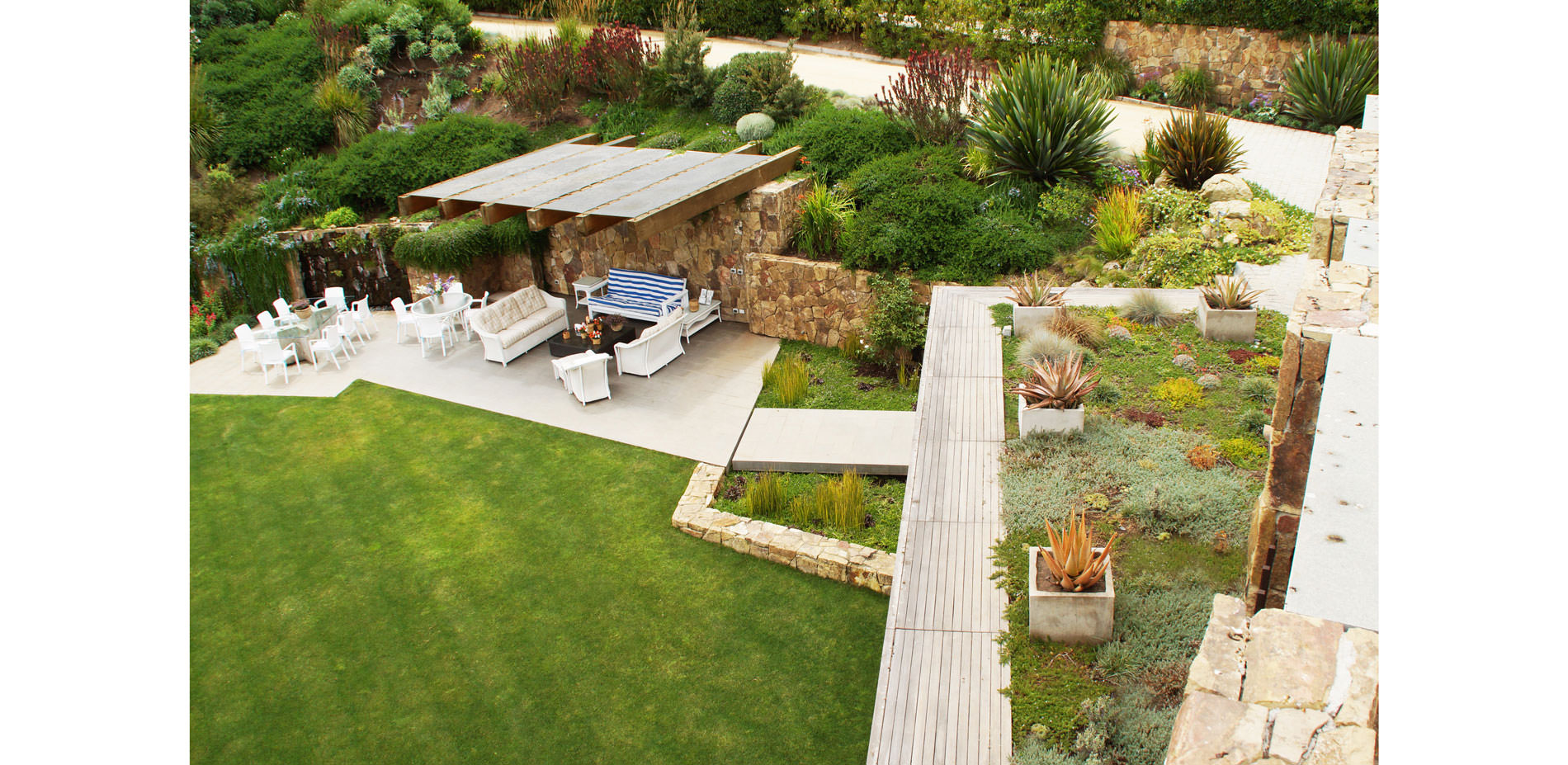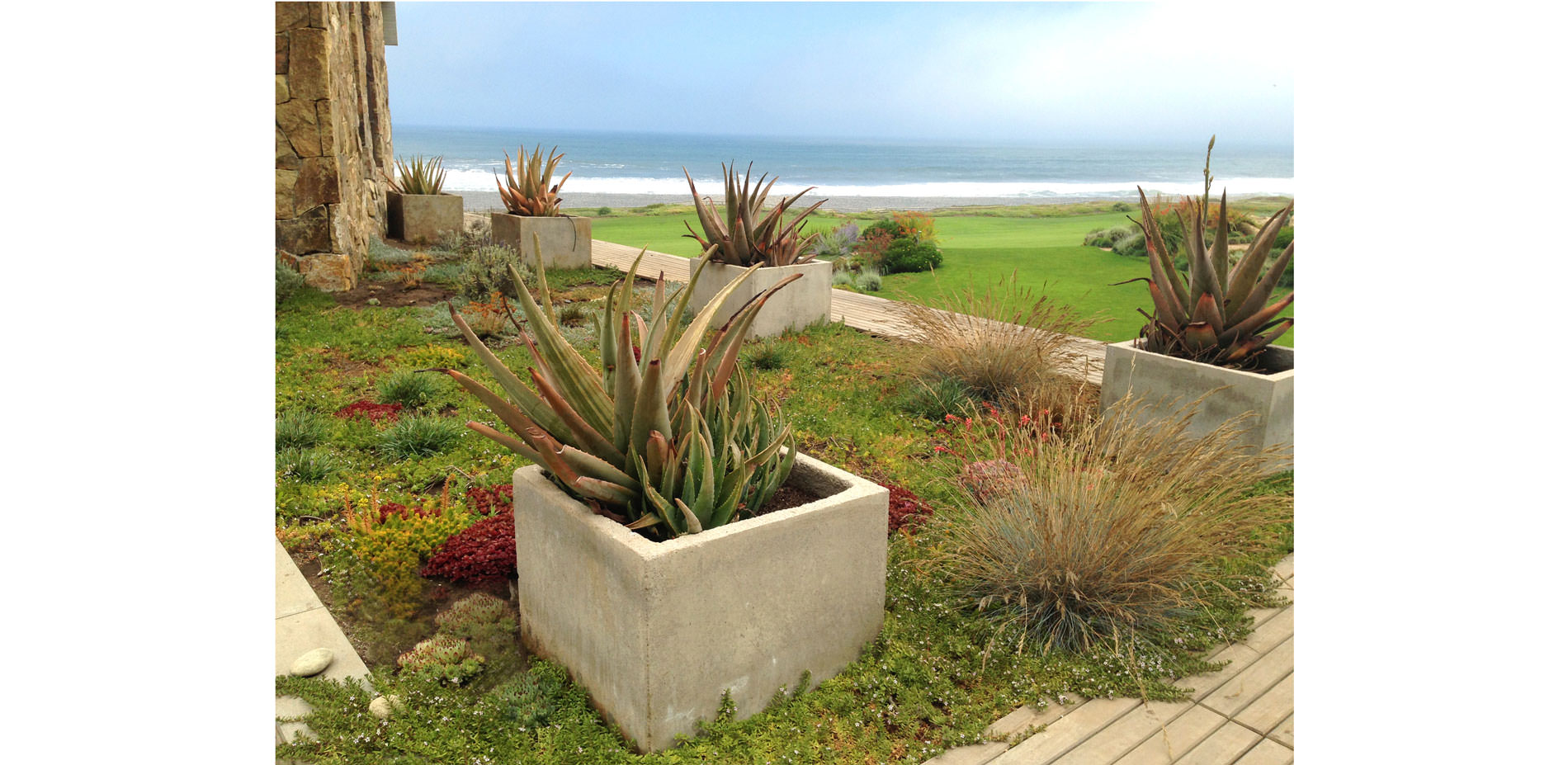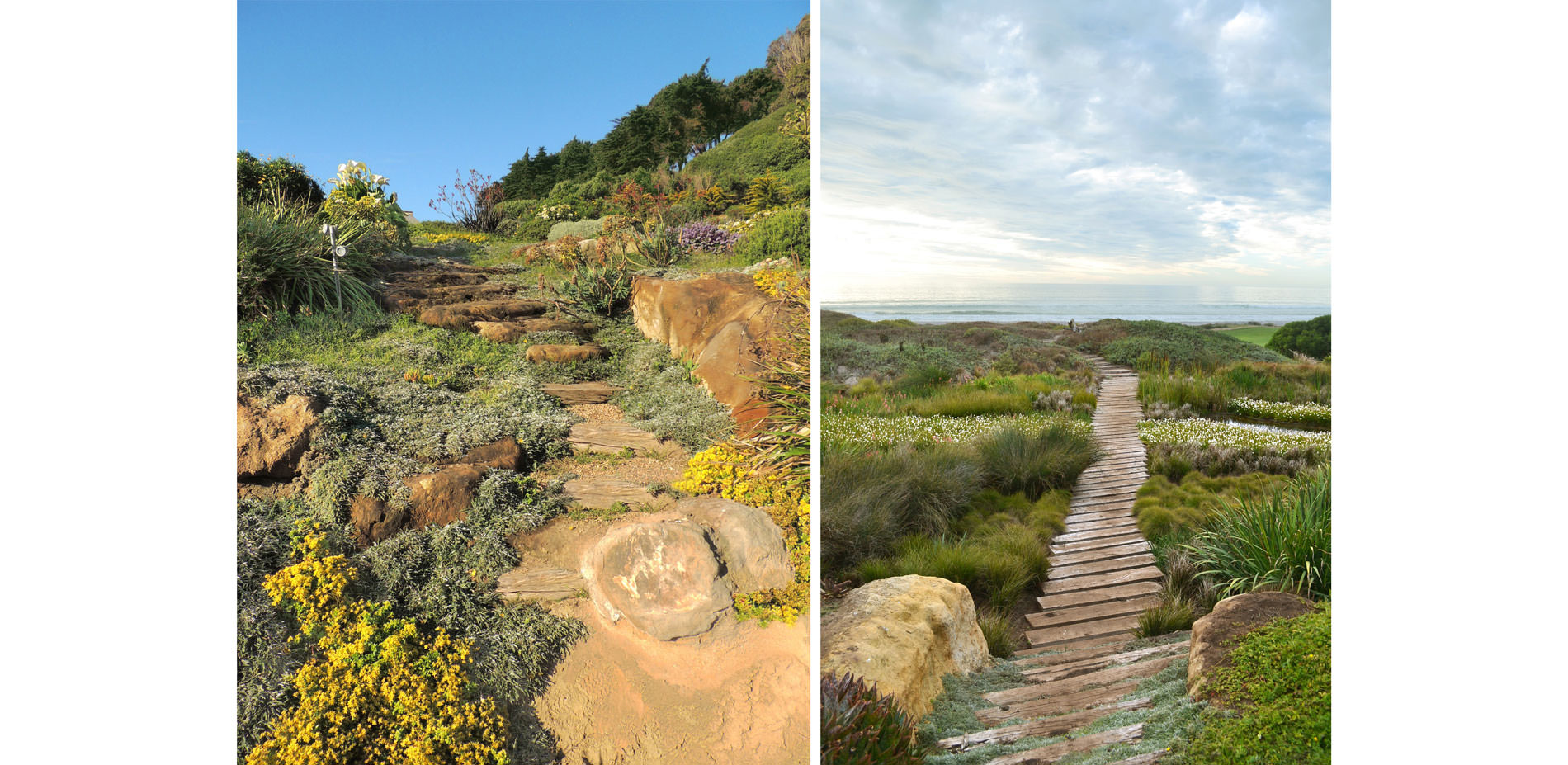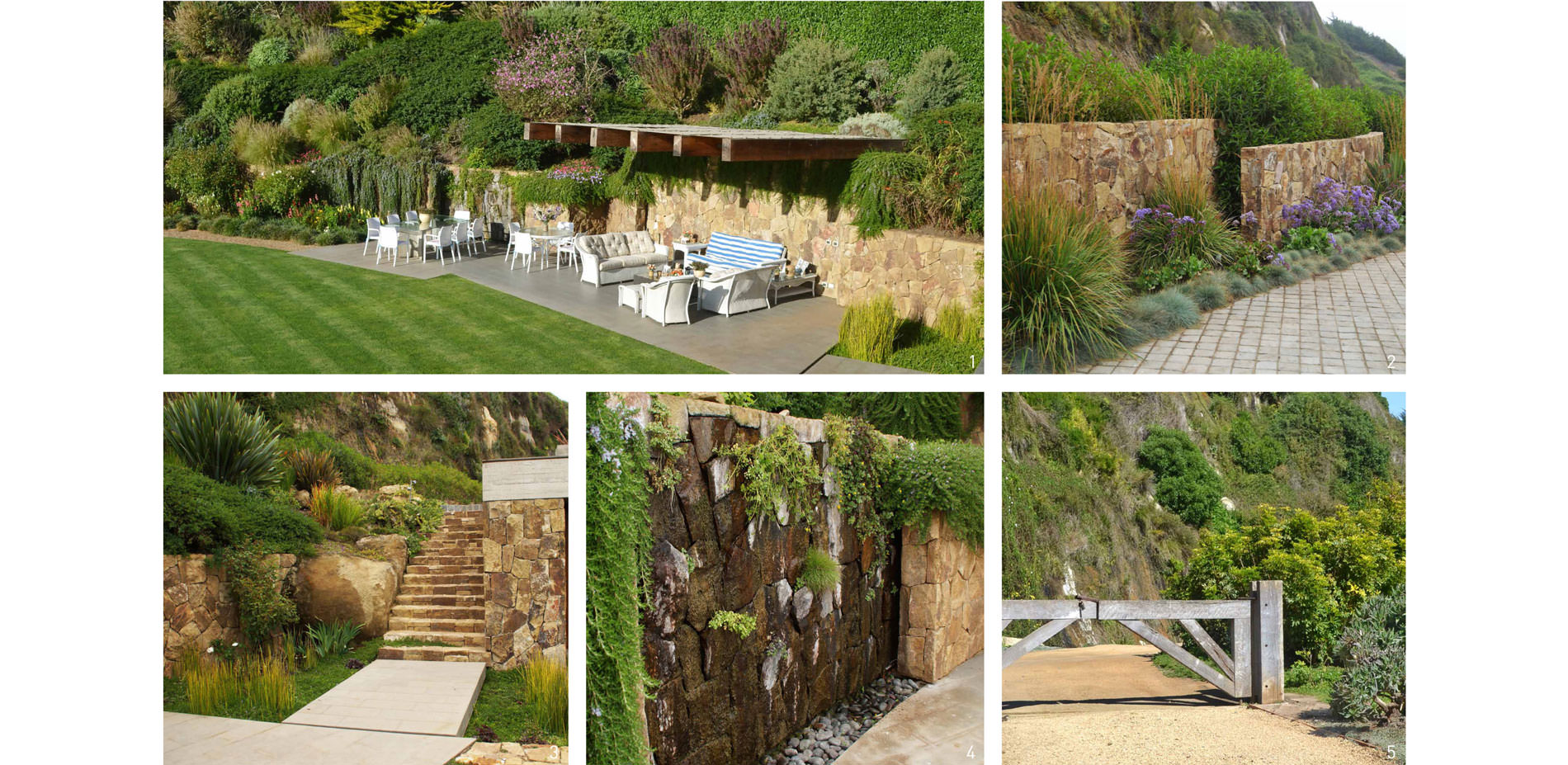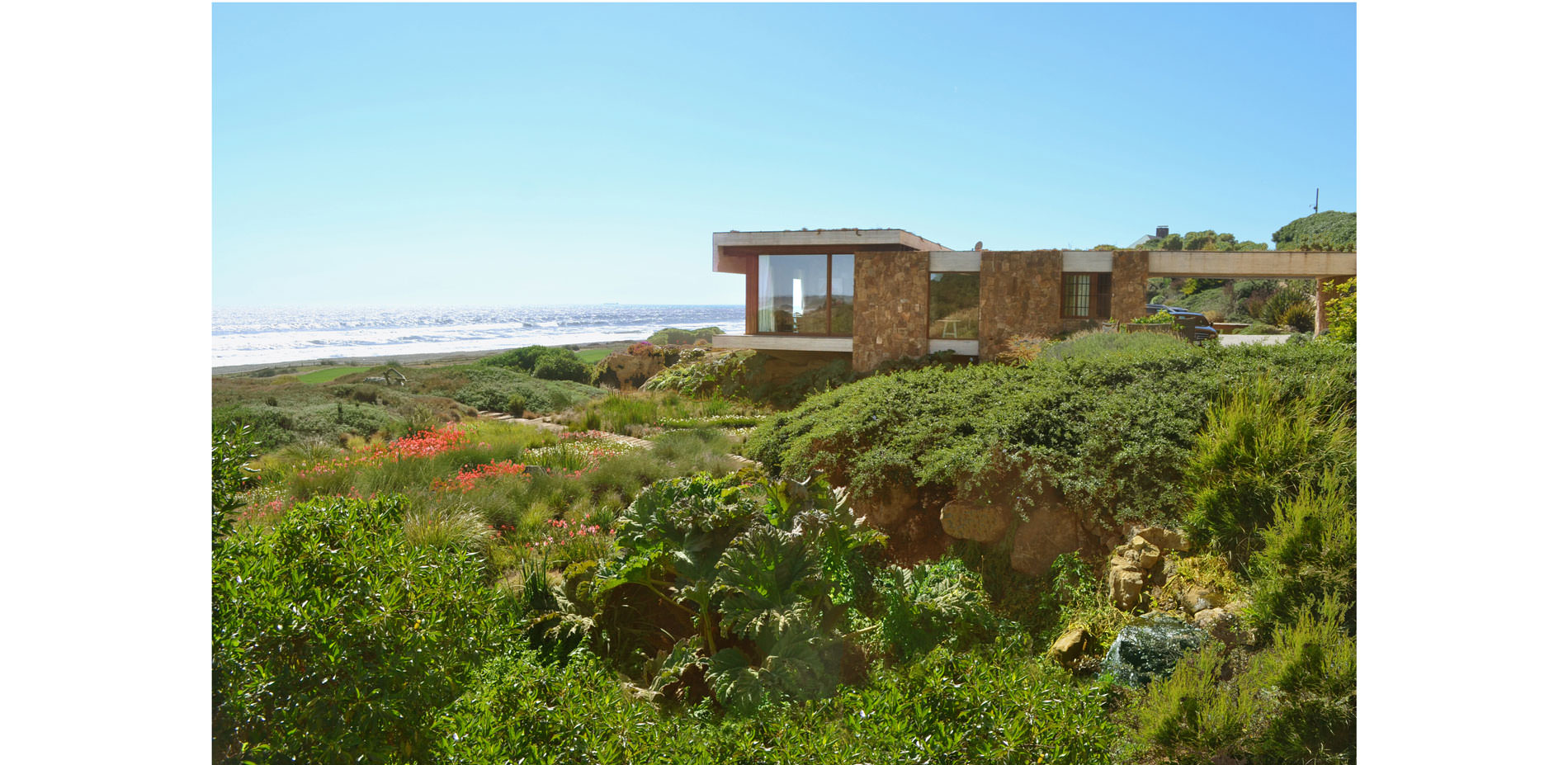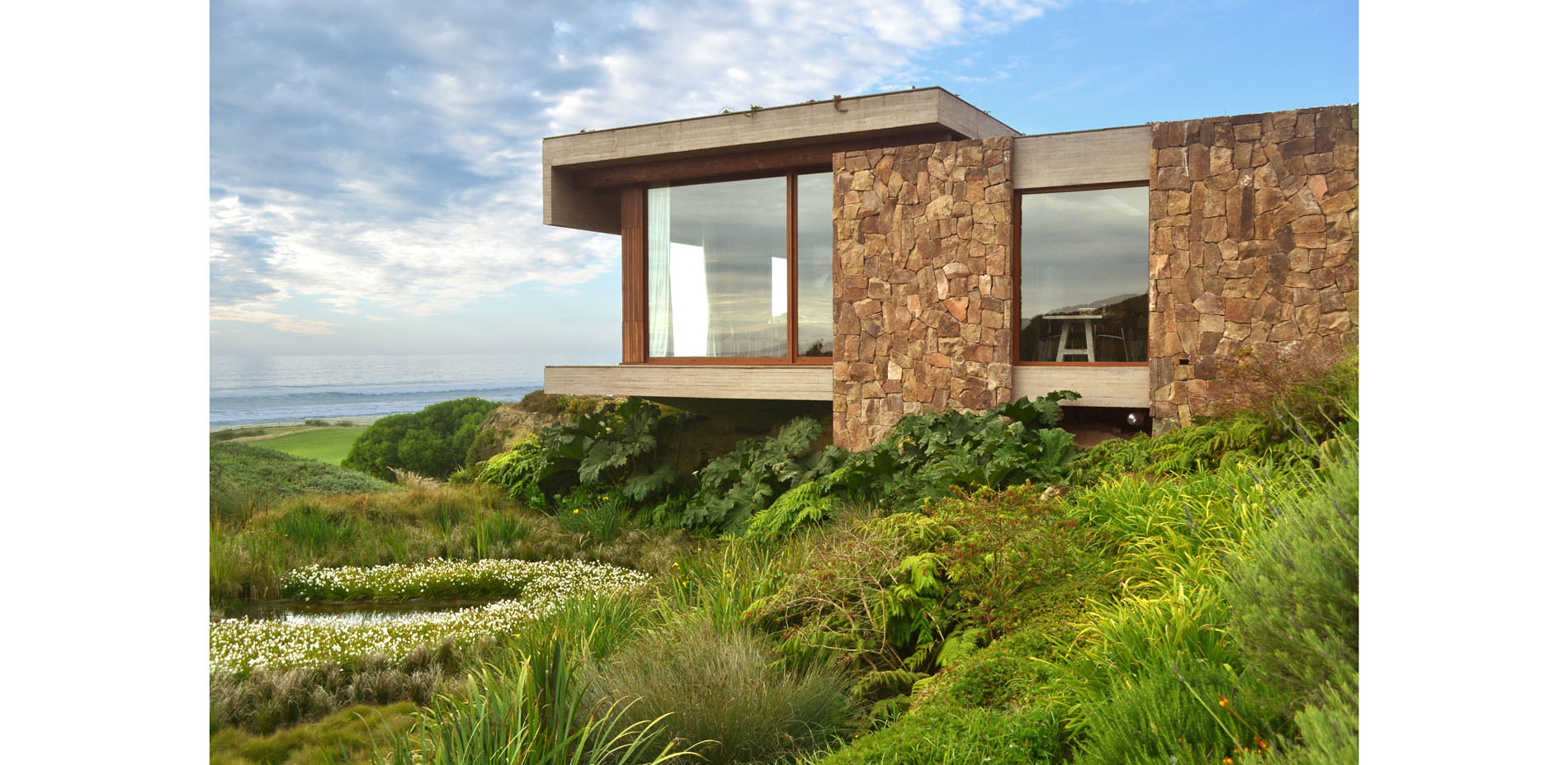Casa Las Brisas - Formation of a Coastal Retreat
Honor
Residential Design
Las Condes, Chile | C. Stuart Moore Design
This was a compromised site… This was a kind of restoration project at some level, and the transformation is remarkable.
- 2017 Awards Jury
PROJECT CREDITS
Lead Designer
- C. Stuart Moore, ASLA, Principal
PROJECT STATEMENT
This 6000m 2 property is positioned below a discharge point for storm water drainage of a 300-hectare residential development. An engineered solution had two pipes, each one meter in diameter, at the top of a precipice, and consequently they created significant erosion during heavy storms. Invasive blackberry vines quickly replaced the eroded natural vegetation. The landscape architect aimed first to control the storm drainage and restore natural environments before combining with the architect to create a unique setting for a new residence.
The new contemporary Mediterranean residence is balanced above a unique sandstone formation affording prominent coastal views. Besides the ocean, the site has a numerous characteristics and sensitivities. A full 360 degrees of views and considerations were taken into context. Storm water control, filtration spring, natural runoff, environmental habitat restoration, and visual appeal were the primary objectives to make the most of the site.
PROJECT NARRATIVE
History and Objectives
In the mid 90’s, a 300-hectare residential resort community was built along a coastal bluff 8 kilometers south of Santo Domingo, Chile. The majority of the storm water collected from the new roads and roofs was diverted to the southeastern corner of the property and subsequently discharged from the top of a 40-meter cliff. Following a few major storms, a new defile was formed and many cubic meters of sand were washed out to the sea. Blackberries quickly populated the scarred environment. We were challenged to control the storm water discharge and recreate a favorable ecological environment. Although challenging, the aforementioned cliff seeps offered opportunities to harness and govern the water. The home’s location is very important to the homeowner because the site essentially links the existing development to a future planned community and working farm. We addressed and planned access to the residence with arrivals from both the farm and existing development.
Project Vision
A prominent and central sandstone formation extending towards the ocean was quickly identified as a center piece for the home’s foundation. Its unique formation adequately elevates the main floor or second level, with views above the garden and to the ocean. Considering the rich context of the environment and geology, we sought to create numerous settings within the site’s framework to add interest and attraction. Architecturally, the idea was to keep the lines and forms simple and elegant. Similarly, the surrounding landscape would be a rich composition of colors and textures with very subtle geometry for circulation and visual cues. Control of the storm water included a new pond to eliminate turbulent forces, water velocities and erosion. Rainwaters and residual waters were directed from the pond through a series of drops and into a newly formed coastal wetland. Spring waters emanating from the sea cliff were captured and diverted through the garden to reduce hydrostatic pressures and secure the home’s foundation. Finally, significant grading and earthwork helped divert coastal breezes and create microclimates.
Connection – Home and Landscape
During the clearing a 2-ton granite boulder was discovered on top of the sandstone formation. Unlike any other stone, it is clear it was an ocean deposit from another era. It is featured in an entry courtyard with another relic, an old driftwood. Carefully selected beach stones and were used to form a mosaic between ancient plant types. A circular roof void couples the courtyard to the heavens above. The upper floor includes the kitchen, dining and living rooms, and a master suite, all of which have unique views to the surrounding landscape. The dining room overlooks a wetland, where the controlled seepage is released, and a reconstructed sand dune positioned to conceal immediate views to an adjacent golf hole. The sedimentary sandstone and its eroded voids were filled with succulents with bright colors in juxtaposition with cooler ocean hues. The master suite looks over a lawn linked directly to the golf course, a simple sweeping stone wall and a collection of individually placed sandstone boulders. A sharply inclined hill was formed to separate the site from the adjacent lot serves as a colorful backdrop to the garden. The lower building level was carved into the side of the sandstone formation and contains three guest rooms and a small common living, all of which are graced with a simple walkout to a grassed terrace. Green roofs cover both the lower and upper levels.
Movement and Circulation
Modest materials including stone, wood, decomposed granite, pebbles and hardened soil were featured for walkways, driveways and terraces. Impermeable paving was limited to the parking and a “quincho” or exterior patio. The vehicular driveway passes under an open carport and is connected to both the residential development and private farm. Simple wood gates mark the lot limits. A pedestrian pathway circles the site joining the collective elements and gardens. The quincho includes a living and dining space covered by cantilevered beams and canvas. We graded the site so views would extend across the lawn and over the golf to the ocean so to eliminate sights of passing golfers. An isolated fire pit was included as a visual punctuation from the master bedroom and provide a magical retreat. The path was interrupted where it intersects with the lawn. Steps were carved into several of the large boulders and placed in transition zones. A boardwalk that spans the wetland extends onto the dune destined to a driftwood bench. In general, driftwood was used as accents, bird perches, plant dividers and containers. Lastly, an easement was included for the golfer’s circulation. Borrowing finish treatments of the home, we created a series of staggered stone walls to separate and conceal views to the cart path from the entry courtyard.
Spring Waters
Spring water coming from the cliff was guided to a weeping stone wall set directly behind the exterior dining terrace.The water is then directed to a low point and used for irrigation. Additionally, water is guided to a small pond in the middle of the wetland where it overflows to nurture the vegitation. Eventually it joins the runoff from the storm water system leading to the coastal wetland. Irrigation relies solely on the spring water, and the natural discharge remains unchanged. After establishment, much of the landscape requires little or no water, including the dunes, roof and rock gardens.
Opportunities
A strong earthquake buckled a weary section of the sea cliff several hundred meters south of the home site. Its collapse covered a portion of a small wetland at the bottom of the cliff face and consequently required removal of the rubble. Large blocks, often more than 3 tons, were moved to the home site and used to create natural walls. These boulders define the limits of many of the planting zones and create vertical variations similar to the architecture.
Coastal Wetland and Dune Restoration
Scars from the impacted storm water discharge zone were transformed into a pond, stream, and wetlands. Eroded dunes were constructed from spoils of the excavation of the ponds and wetland and they were eventually capped with sand. Revegetation simply mimicked vegetation types and densities from similar environments. Plants were harvested and replanted within hours and during the normal wet winter season. The dune only required supplemental irrigation through the first summer while the wetland emerged free of need.
Technical Challenges
It is often difficult to create an organic, natural appearing solution when collaborating with engineers. Initial details included rigid borders and concrete lined channels, all of which would have been a huge challenge to conceal. Following several workshops and meetings, we were able to increase the width of the flow zones to reduce discharge velocities. These changes permitted covering of the concrete forms to allow vegetation to take hold. The channel sides were almost entirely eliminated and the flat base was changed to form a basin to allow for natural sedimentation and plant recurrence.
PRODUCTS
Product Sources: DRAINAGE/EROSION
- Piping - ADS, Advanced Drainage Systems
- Erosion control - Jute Netting
Product Sources: FENCES/GATES/WALLS
-
Custom by D'Habitat Paisajismo
Maria olavarrieta 11719,
Lo barnechea, Santiago, Chile
Product Sources: IRRIGATION
Product Sources: LUMBER/DECKING/EDGING
-
Boardwalk - Custom by D’Habitat Paisajismo
Maria olavarrieta 11719,
Lo barnechea, Santiago, Chile
Product Sources: STRUCTURES
-
Quincho, Covered Structure - Custom by EBCO & CSM Design
Av. Santa Maria 2450
Providencia, Santiago, Chile
Product Sources: WATER MANAGEMENT/AMENITIES
- Pond - Custom by D’Habitat Paisajismo
- Water wall - Custom by EBCO
Product Sources: GREEN ROOFS/LIVING WALLS
-
Green Roof - Custom by EBCO
Av. Santa Maria 2450
Providencia, Santiago, Chile
Product Sources: HARDSCAPE
-
Ceramic paving
Pizarras Ibericas
Luis Pasteur 6677 Local 1,
Vitacura, Santiago, Chile
Product Sources: LIGHTING
- Design by CSM Design, LTDA
- Fixtures supplied by Hunza Lighting
